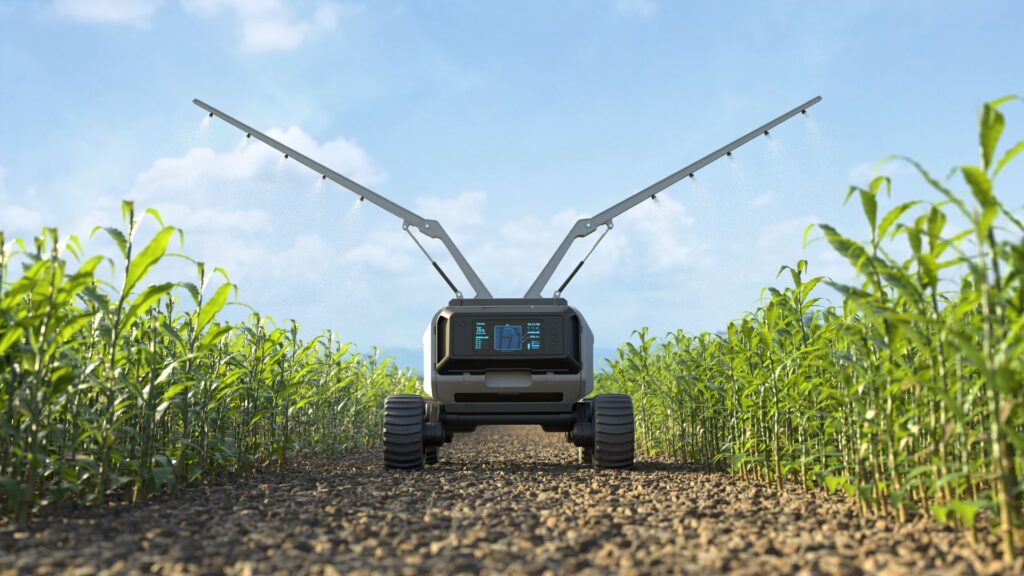The agricultural sector is undergoing a transformative revolution, driven by advancements in robotics and precision technologies. As the global population continues to grow, the demand for food production is increasing exponentially. To meet this demand, farmers and agricultural experts are turning to robotics to optimize crop yields, reduce waste, and enhance sustainability. Robotics in precision agriculture is not just a futuristic concept—it’s a present-day solution that is reshaping the way we grow food.
What is Precision Agriculture?
Precision agriculture is a farming management concept that uses technology to observe, measure, and respond to variability in crops. The goal is to ensure optimal growing conditions for plants, maximize efficiency, and minimize resource use. By leveraging data-driven insights, farmers can make informed decisions about planting, irrigation, fertilization, and harvesting.
Robotics plays a pivotal role in this approach, offering tools and systems that automate labor-intensive tasks, collect real-time data, and perform precise actions at a scale and accuracy that surpass human capabilities.
How Robotics is Transforming Agriculture
- Autonomous Farm Equipment
Traditional farming equipment, such as tractors and harvesters, is being replaced or augmented by autonomous robots. These machines can perform tasks like plowing, planting, and harvesting with minimal human intervention. Equipped with GPS, sensors, and AI algorithms, they can navigate fields, avoid obstacles, and operate with pinpoint accuracy. This reduces labor costs and increases efficiency. - Crop Monitoring and Analysis
Robots equipped with cameras, drones, and multispectral sensors can monitor crop health in real time. They capture detailed images of fields, analyze plant conditions, and detect issues such as nutrient deficiencies, pest infestations, or diseases. This data allows farmers to address problems early, preventing crop loss and improving yields. - Precision Spraying and Weeding
Robotic systems can identify and target specific areas of a field that require treatment, such as applying herbicides or pesticides. Unlike traditional methods that spray entire fields, these robots use computer vision and machine learning to distinguish between crops and weeds. This reduces chemical usage, lowers costs, and minimizes environmental impact. - Soil Analysis and Management
Robots can collect soil samples and analyze them for moisture levels, pH balance, and nutrient content. This information helps farmers tailor their irrigation and fertilization strategies to meet the specific needs of their crops. Over time, this leads to healthier soil and higher yields. - Automated Harvesting
Harvesting is one of the most labor-intensive aspects of farming. Robotic harvesters are designed to pick fruits, vegetables, and other crops with care and precision. These machines use advanced sensors and grippers to handle delicate produce, reducing damage and waste. They can also work around the clock, ensuring that crops are harvested at peak ripeness.
Benefits of Robotics in Precision Agriculture
- Increased Crop Yields: By optimizing growing conditions and addressing issues early, robotics helps farmers achieve higher yields.
- Resource Efficiency: Precision agriculture reduces the overuse of water, fertilizers, and pesticides, conserving resources and lowering costs.
- Sustainability: Robotics promotes sustainable farming practices by minimizing environmental impact and reducing waste.
- Labor Savings: Automated systems reduce the need for manual labor, addressing labor shortages and lowering operational expenses.
- Data-Driven Decisions: Farmers gain access to actionable insights, enabling them to make smarter decisions and improve long-term productivity.
Challenges and Future Outlook
While robotics in precision agriculture offers immense potential, there are challenges to overcome. High initial costs, the need for technical expertise, and concerns about data privacy are some of the barriers to widespread adoption. However, as technology continues to advance and become more affordable, these challenges are likely to diminish.
The future of robotics in agriculture is bright. Innovations such as swarm robotics (where multiple small robots work together), AI-powered decision-making systems, and advanced machine learning models will further enhance the capabilities of agricultural robots. These advancements will enable farmers to achieve even greater precision, efficiency, and sustainability.
From Our Editorial Team
Our Editorial team comprises of over 15 highly motivated bunch of individuals, who work tirelessly to get the most sought after curated content for our subscribers.


